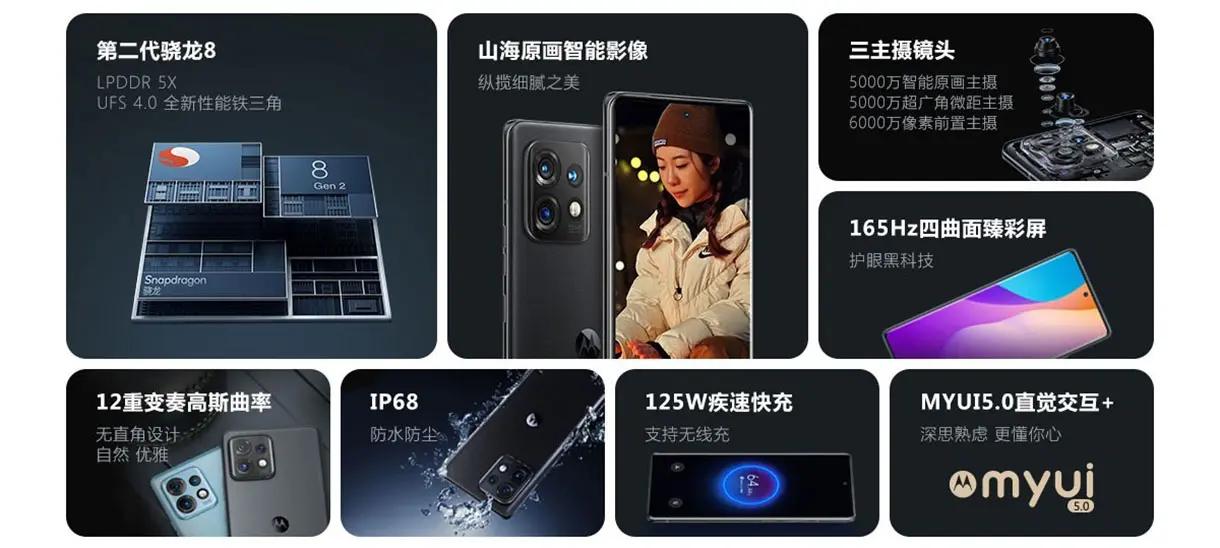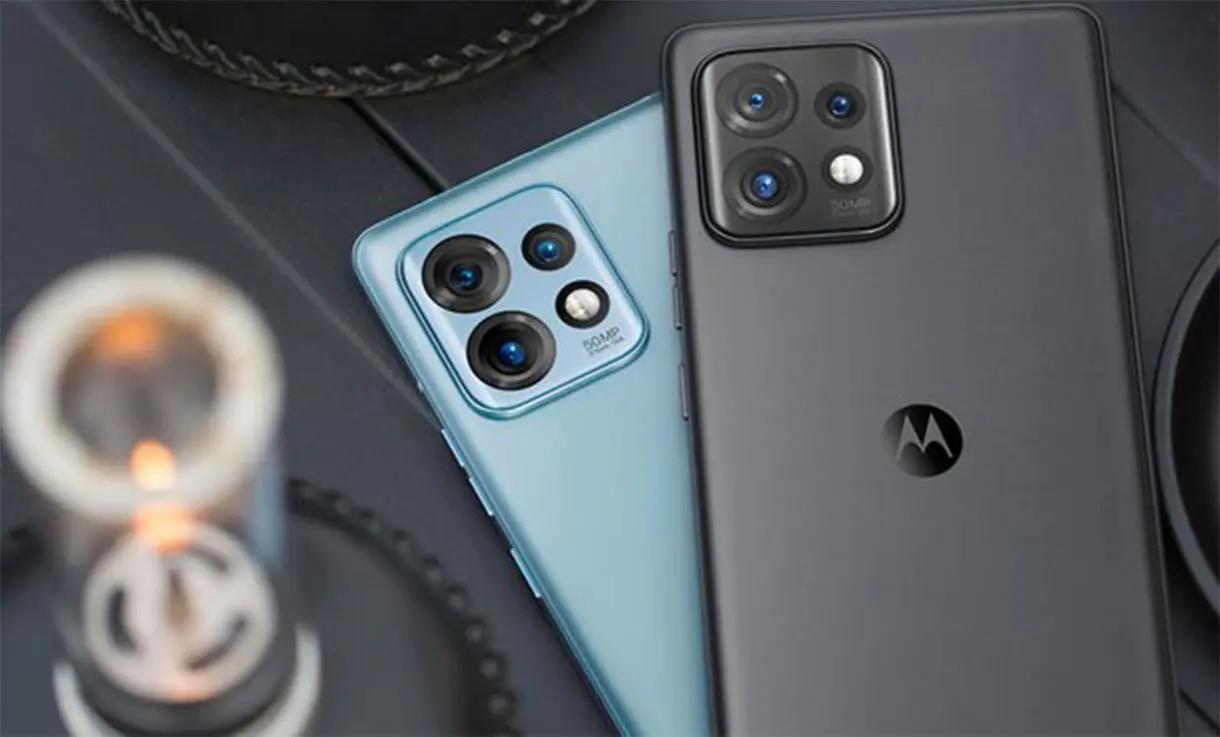Motorola is one of the long-standing tech companies renowned for producing a wide range of smartphones. Over the decades, the ever-expanding company has launched several smartphones with multiple exciting features. The brand endeavors to manufacturing quality products for its users around the globe. On 15th November, the company unveiled two smartphones one is its high-end model Moto X40, and the other is the inexpensive 5G Moto G53. Both smartphones were launched in China, but the worldwide release would take some time for international users to get a hold of these smartphones.
We’ve gathered all the prevailing features and specs of the recently launched smartphones– Moto X40 and Moto G53 5G, from a competent company like Motorola.

The pioneering firm packed the premium Moto X40 with the updated processor from the previous smartphone Moto X30 Pro. Motorola did not release the X40 model with the “Pro” tag, but the device has arrived with several improved specs, including the latest Snapdragon 8 Gen 2 and 165 Hz refresh rate. Motorola Moto X40 features an OLED display of 6.7-inch display size with 1080 x 2400 pixel resolution. The smartphone is protected with Corning Gorilla Glass Victus, supports HDR10+, and has a 10-bit panel with DC dimming. It becomes the first of the company to have a 165Hz display. Adreno 740 GPU, an updated OS used to maximize its potential and elevate the user experience.
As for the battery and charging capability, the Moto X40 features 125W wired charging. It is unlikely to have wireless charging in a midrange Motorola smartphone, even though it has been downgraded from 50W (in the X30 Pro) to 15W wireless charging. It also flaunts 5W reverse charging. The Moto X40 can be charged from wired charging in less than half an hour, probably at 50% in only 7 minutes. However, the model does not get an update in the battery capacity and has the same non-removable battery of 4,600mAh as the previous Pro model.
The smartphone has triple camera sensors housed in a square module at the top left corner. Motorola has also not upgraded the primary camera sensor of the Moto X40 rather than featuring an improved camera sensor, furnished with a mediocre 50MP sensor. The smartphone is equipped with OIS, 1.0µm native pixels with 4-in-1 binning support to complement the primary camera. The secondary ultra-wide camera is a 50MP lens, and it comes with 1.3µm pixels. The user can also benefit from the 2.5cm/1’’ autofocus option to capture macro images. A portrait with a 2x zoom lens is the third sensor in the camera unit. It has a dual LED flashlight. The smartphone can record videos at 4K@30fps, 1080p@30/60/120/240fps, and 720p@960fps. Another similar feature of the X30 Pro is X40’s selfie camera, an HDR 60MP camera sensor housed at the center punch hole in the smartphone. The video recording capabilities of the smartphone are 4K@30fps and 1080p@30fps.

The advanced Snapdragon 8 Gen 2 chipset has an 11-layer cooling programmer with a vapor chamber of 3,002mm2 size. The smartphone is powered with 8GB and 12 GB of LPDDR5X RAM with 128 GB, 256 GB, and 512 GB of internal storage. Moto X40 is a competitive smartphone with many improved features, but there is still room for improvement in some aspects, and we may get a pro version of the X40 series.
The fingerprint scanner is mounted under the display at the center of the handset and not at the side. The smartphone is 8.6mm thick and weighs up to 199 grams. It contains stereo loudspeakers but does not have a 3.5mm jack. The handset has a dual SIM (Nano-SIM, dual stand-by).
As for connectivity, the Moto X40 features 5G, 4G LTE, Wi-Fi 6, Bluetooth, GPS, and a USB type-C charging port. It comes with internal storage variants, and the company hasn’t included a microSD card slot. Moto X40 comes in two standard colors, black and blue. The water resistance rating of the smartphone is IP68, and it can survive 1.5m underwater for half an hour.
Motorola Moto X40 is priced at $490 for the initial internal storage of 8/128 GB RAM. The smartphone is on pre-order in China, and the company will start shipping towards the end of this year. The remaining internal storage configurations retail at 8/256GB for $530, 12/256GB for $574, and 12/512GB for $617.
The affordable Moto G53 arrives with an LCD panel of 6.52 inches, HD+ resolution, 120 Hz refresh rate, and 240 touch sampling rate. The budget-friendly smartphone's advertisement for its 5G connectivity reveals enough about its technology.
Moto G52 4G and 5G successor, Moto G53, should have brought more exciting features and an updated processor to grab buyers' attention. Motorola is often accused of confusing alignments of specs improvements since Moto G51 features better specs than its latter two models.

It is powered by an octa-core Snapdragon processor with 8 GB RAM and 128 GB RAM expandable internal storage and supports up to 1TB microSD cards. It runs on Android 13-based MyUI 5.0. A user gets two color options: Black and White. The budget phone pleasingly has a 3.5mm headphone jack. As for the battery, the Moto G53 features a 5000mAh battery as its predecessor. The wired charging speed has gone down to 18W (demoted from 30W), and it does not feature wireless charging. A user gets a 10W charger in the box.
The front camera, like its display and charging speed, is also downgraded to an 8 MP sensor from the 16 MP sensor in G51. It is housed in the punch-hole cutout at the center. The demotivation does stop at the selfie snapper, rear camera sensor also got downgraded from its predecessor smartphones. Motorola has removed the ultra-wide sensor, and the primary sensor still features a 50 MP lens with 0.64µm native pixels (1.3µm after binning) though it possesses a 2MP macro lens.
The inexpensive Motorola Moto G53 is priced at $130 for 4/128 GB and $158 for 8/128 GB.